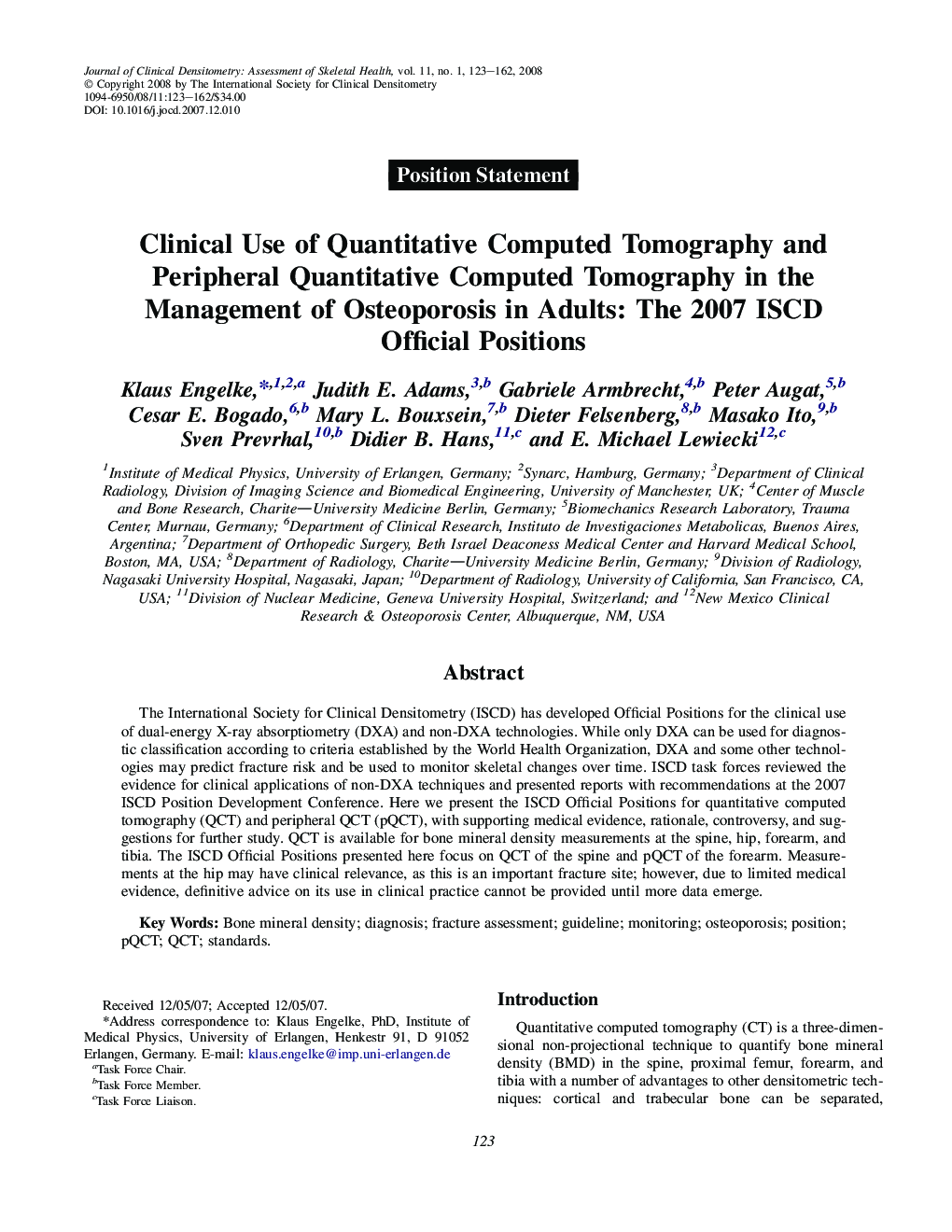| Article ID | Journal | Published Year | Pages | File Type |
|---|---|---|---|---|
| 3271549 | Journal of Clinical Densitometry | 2008 | 40 Pages |
Abstract
The International Society for Clinical Densitometry (ISCD) has developed Official Positions for the clinical use of dual-energy X-ray absorptiometry (DXA) and non-DXA technologies. While only DXA can be used for diagnostic classification according to criteria established by the World Health Organization, DXA and some other technologies may predict fracture risk and be used to monitor skeletal changes over time. ISCD task forces reviewed the evidence for clinical applications of non-DXA techniques and presented reports with recommendations at the 2007 ISCD Position Development Conference. Here we present the ISCD Official Positions for quantitative computed tomography (QCT) and peripheral QCT (pQCT), with supporting medical evidence, rationale, controversy, and suggestions for further study. QCT is available for bone mineral density measurements at the spine, hip, forearm, and tibia. The ISCD Official Positions presented here focus on QCT of the spine and pQCT of the forearm. Measurements at the hip may have clinical relevance, as this is an important fracture site; however, due to limited medical evidence, definitive advice on its use in clinical practice cannot be provided until more data emerge.
Keywords
Related Topics
Health Sciences
Medicine and Dentistry
Endocrinology, Diabetes and Metabolism
Authors
Klaus Engelke, Judith E. Adams, Gabriele Armbrecht, Peter Augat, Cesar E. Bogado, Mary L. Bouxsein, Dieter Felsenberg, Masako Ito, Sven Prevrhal, Didier B. Hans, E. Michael Lewiecki,
